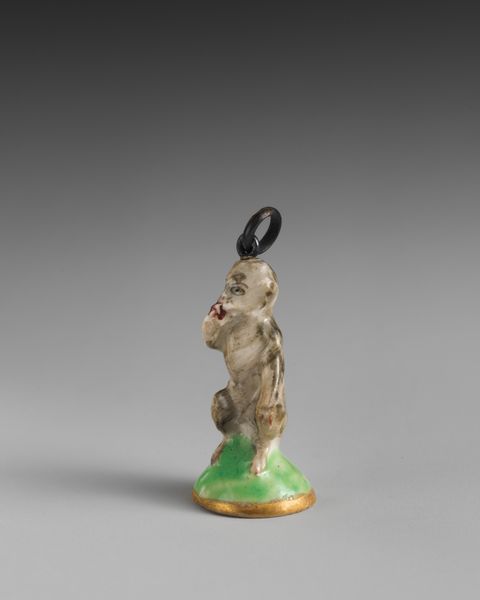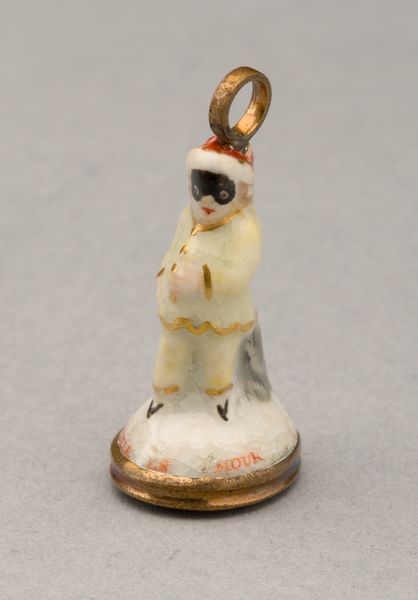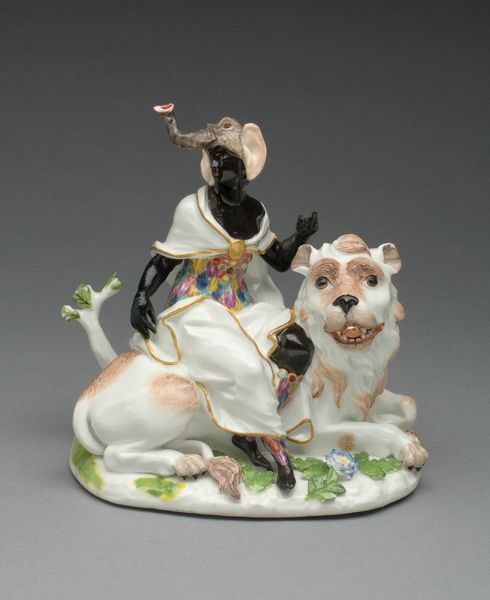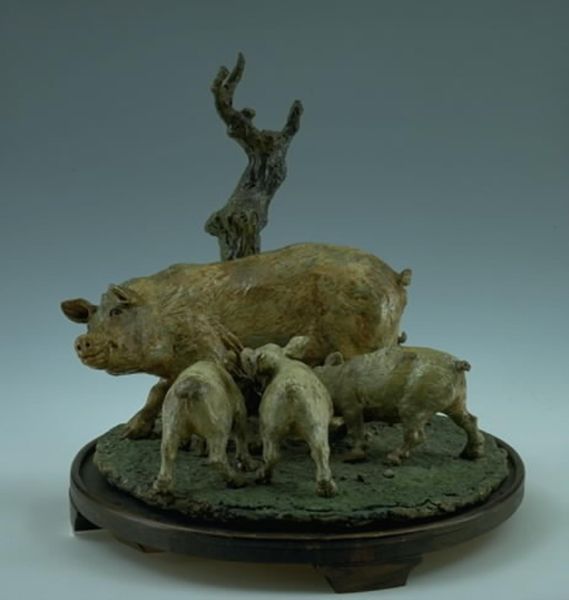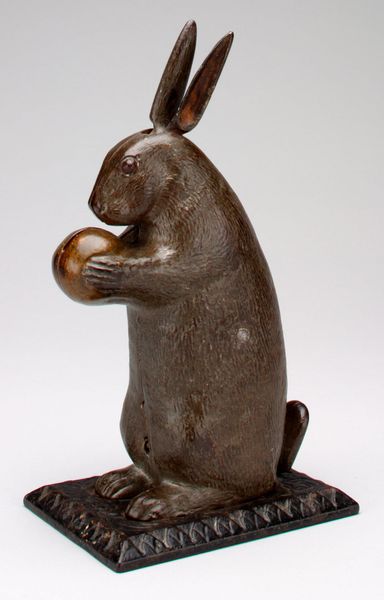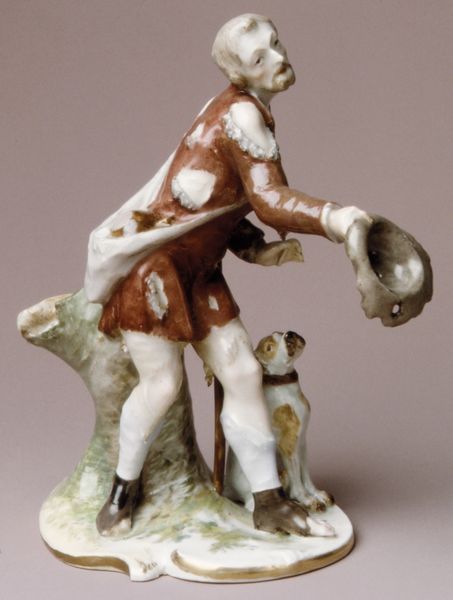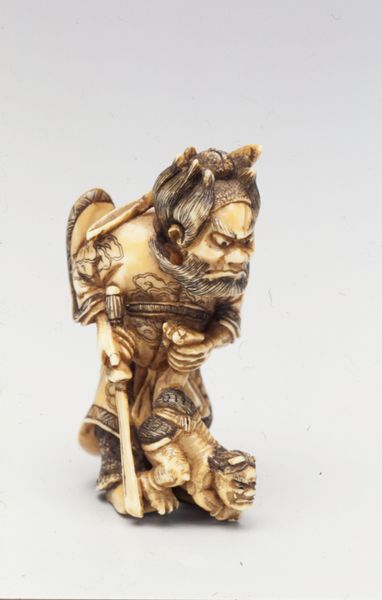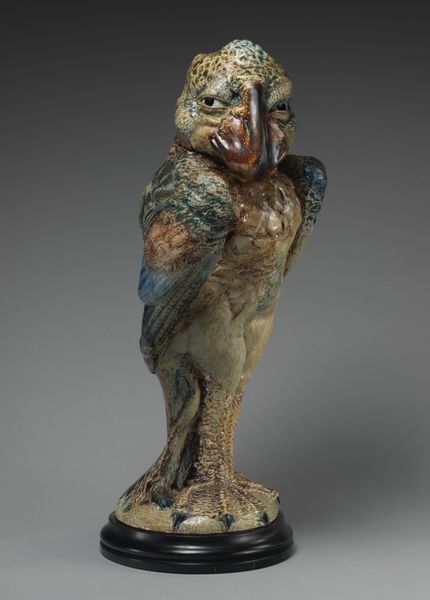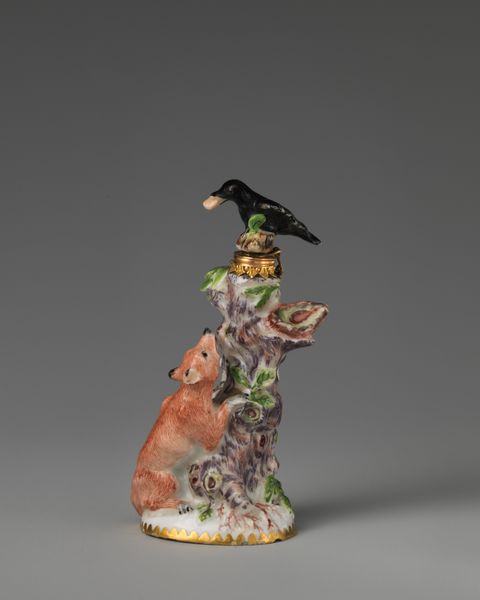
ceramic, porcelain, sculpture
#
ceramic
#
porcelain
#
figuration
#
sculpture
#
decorative-art
#
rococo
Dimensions: 7.3 × 3.8 cm (2 7/8 × 1 1/2 in.)
Copyright: Public Domain
Curator: These small-scale ceramic figures by the Bow Porcelain Factory, entitled “Two Monkeys,” date from around 1755. Aren't they something? Editor: Indeed! My first thought is how delicately whimsical it is—a real burst of rococo playfulness captured in porcelain. Curator: Precisely. The Bow factory, you see, was one of the most significant early manufacturers of porcelain in England, and these figures speak volumes about the aspirations and tastes of the burgeoning middle class at the time. Porcelain was the ultimate luxury. Editor: How so? Walk me through this… What I am curious about, considering it’s Rococo, how would people engage with something like this? Would they place it among other finery in a salon, to signal class? Curator: Spot on! It’s all tied to the availability and price of materials like kaolin. Bow used bone ash early on. This meant figures like these were status symbols. The way they’re staged, mimicking human expressions in a comedic manner – it reflects a changing societal lens toward humans as superior…even as society gently poked fun at its own flaws. Editor: Ah, a kind of…miniaturized morality play for the mantelpiece! But what about the craft itself? The delicate nature of porcelain is a huge aspect here... The labor needed must have been expensive. Curator: It absolutely would have been. Consider the entire chain from extraction, creation and ornamentation. Porcelain was demanding, from sourcing materials to the skilled artisans who molded and painted it. That intense labor, that careful choreography of manufacturing, it all adds to the value—both literally and symbolically. These pieces offer more than aesthetics—it shows economic shifts through cultural artifacts. Editor: I find myself admiring the way Bow factory navigated production costs with art. Such insight! Curator: Exactly! So, we’re both viewing this tiny sculpture in similar lights. Perhaps the next time we engage, it can also revolve around porcelain...but how production influences larger sociopolitical themes?
Comments
No comments
Be the first to comment and join the conversation on the ultimate creative platform.
